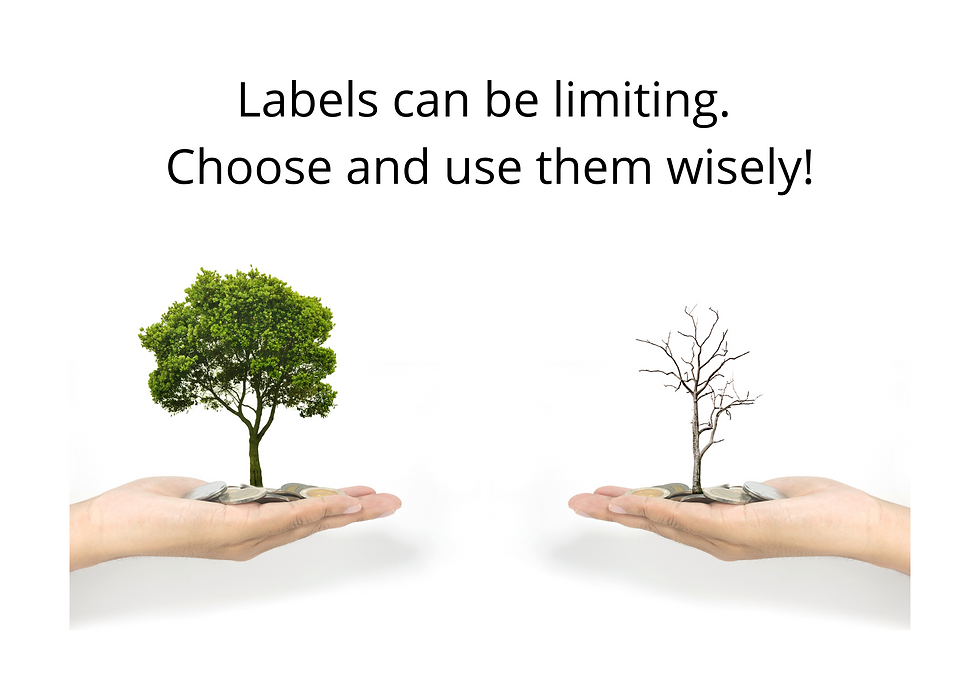Want to change? What are the options?
- Mary Ely

- Jun 16, 2022
- 7 min read
Updated: Feb 15, 2023

Do you want to change in some way, but aren’t clear on what the options are or what would suit you and your situation the most?
If so, then I hope this blog might be helpful.
It’s focused on personal change but as team development and business change both rely on a group of individuals changing, the blog explains how the options are relevant for those too.
This is the list of options which I think covers all the main possibilities.
Self-Help
Self-paced learning
Live training/workshops
Mentoring/Advisory…and consultancy
Group coaching
Individual coaching (where the individual could be a person or a team)
Therapy – not generally an option for business change, but I’m happy to be challenged on that 😁
The blog summarises each one and highlights the differences between them, so you can decide which option (or mix of options), would be the most suitable for you and your unique situation.
But first…
Here are a few things you need to know about the options and the core conditions needed for any of them to be successful.

The list is in order of impact and effectiveness
The order of the options in the list reflects the amount of personalisation each one brings to you and your unique situation.
As with anything, the more tailored something is to you, the better it fits.
And when it comes to change, more tailoring and a better fit mean
a bigger impact for you,
a better chance of effective and lasting change,
All change relies on embedding a different way of thinking
The process of how we learn and therefore what we need to focus on if we want to change is explained in my blog on the NLP Communication Model which you can find here.
But the core thing to take from that when it comes to personal change is that
How we think is based on everything we have learnt and experienced to date.
The way we think is therefore unique.
All change starts with a different way of thinking.
…which all help explain why personalisation makes such a difference for individual change.
You need to interrupt your existing thought patterns first
Most of the time, we are running on autopilot. Unaware of the processing that is happening in our computer-like minds.
There is seemingly no time between a stimulus/something happening and our response.
So if you want to change how you’re thinking, you need to
uncover the thinking that you want to change.
notice and interrupt it when it happens.
choose your new way of thinking.
You need review-repeat cycles to embed new ways of thinking
Change can happen in an instant, but we generally need an element of review and repetition to really embed a new way of thinking/to embed change.
Building that into the option you choose (if it’s not already there), will mean it becomes more effective and much more likely to succeed than any one-off effort.
Success is up to you – nobody else can think, feel or behave for you
Despite what some people think, and however much you’d like to, you can’t MAKE someone else change or think differently. You can influence someone’s thinking based on what is important to them, but it’s up to them whether they take what you’re saying on board or not.
As the saying goes…
You can lead a horse to water, but you can’t make it drink!
So whatever option(s) you choose, you need to accept that the success of your efforts to change is down to you. Nobody else can do it for you.
Just like it was when you were at school. To get a good mark, you couldn’t just turn up and sit un-engaged in your class. You had to actively listen, do the exercises and do your homework.
Change needs action by you.
Summary of the options
So here’s a summary of each option which highlights the key differences between them.

Self-Help
Reading blogs and books, watching videos and webinars, listening to podcasts and talks
…and making decisions and plans of how to implement what you’ve learnt as a result.
It’s up to you to challenge your own thinking (which can be a bit tricky) and stay motivated and accountable for your success.
No personalisation in this option.
Self-paced learning
As for Self-Help, except that self-paced learning courses generally include a more structured set of content, exercises and ‘homework’ that help to stimulate change and embed it.
Self-paced learning may provide access to the course creator or a community of fellow students to answer specific questions and provide support along the way.
These additions help to make the experience more personal and increase the impact.

Live training and workshops
Like self-paced learning, these include content and exercises, but the added element of live interaction increases the level of personalisation and therefore the impact.
Participants also get to learn through discussion with the course leader and the other participants, which enriches the experience and provides different perspectives to consider and provoke new thinking.
Without incorporating any follow-up activities, the review-repeat element of change isn’t supported and embedding learning will still rely on each individual.
Live training and workshops are generally facilitated by 1 or 2 people.
Having two people adds a bit more variety, different perspectives to consider and can increase the opportunity for interaction and feedback.
Mentoring/Advisory
Working with someone who will offer advice and guidance: what they think you could or should do or might want to consider given your specific situation…based on their experience in similar situations.
"This is what I think you should do. This is what I would do in your situation".
Change happens by experimenting with the advice that’s been given and having the chance to review and amend/repeat with the support of your mentor.
Group coaching
Group coaching is somewhere between live training/workshops and coaching.
It’s focused on a small group of “similar” people
people who are interested in exploring the same topic ,or
people who are faced with similar situations.
For example, group coaching could be used to
embed learning from a training workshop, or
support people who are facing similar challenges. For example new leaders, project managers, or team business leaders with responsibility for delivering a change project.
Group coaching is like
coaching when the group decides what each session will focus on
a mix of coaching and training when the sessions focus on some pre-agreed themes.
As an indication, group coaching is often organised for groups of 6 people across 6 hour-long sessions and may be supported by one or two coaches. For the same reason as live training and workshops, there is value in having two coaches for group coaching.
The content and structure of group coaching supports review-repeat cycles, feedback and the opportunity for interaction with, and learning from both the coach(es) and the other members of the group.

Individual Coaching – for individuals or teams
Coaches come in all shapes and sizes.
Some only work with individuals and some work with teams.
As for group coaching and live training, there is value in having two coaches for team coaching.
Some coaches stick to a certain method or model (e.g. the GROW model) and others (like me) will use anything and everything they have learnt and experienced to date, adapting what they do and how they do it to fit with what works for their client in the moment.
Some coaches have certain specialities based on their interest or experience in that area.
As with any specialist, their base level of knowledge or understanding about your situation can mean quicker results and/or a bigger impact from your time together.
Coaching is the ‘gold standard’ for personalised change support, because
The focus for the session(s) is selected by you, the client
It is about finding solutions that work for you and how you think.
A coach may share perspectives and ideas and challenge you to help broaden your thinking, but they won’t tell you what you should do or how you should do it.
This acknowledges the fact that what may have worked for them may not work for you...and even if it does it'll probably need a bit of tweaking.
You need your own way that works for you and a coach will help you find it.
It helps you explore how you are creating your current reality.
It helps you think about what options and strategies could work for you going forward. Challenging your existing thinking and the internal stories you tell yourself that can hold you back.
It supports the opportunity for review-repeat cycles over time to refine and embed the change.
It helps you stay focused on the changes you want to make, so helps you maintain accountability and motivation.
It’s based on a strong relationship with the coach and incorporates all the elements needed for change.
And, when compared with the other options,
It makes change feel more simple, manageable and comfortable.
It’s more efficient, effective, empowering, engaging and enjoyable.
Also,
Coaching is a great way to follow up on and really embed any change started by any of the other options.
To support a specific change, 6 hours is the average time needed, but session length and the time between sessions is personal to each client and what they want to achieve.

Therapy
Therapy means many different things to many different people and there are all sorts of therapies out there.
For me the main purpose of therapy is the same as coaching - how can you change your current thinking/experience so you can have a better future?
…but the focus and the process of how that happens is different and depends on the therapy you have.
For some therapies, the process may be more prescriptive than coaching but the content is as unique and as personal to the client as coaching.
When comparing coaching and therapy (or counselling), the general difference is that coaching is future focused and therapy ALSO looks at and clears up the past.
So those are the options for personal change.

What’s different for teams and business change?
Self-Help
…can influence team development and business change if the person/people use what the’ve learnt for that purpose.
Self-paced learning and Live training/workshops
Content is generally tailored for the organsation and can be rolled out to help many people develop core knowledge and skills for specific topics such as leadership, team development and change management.
Mentoring/Advisory
Works the same way for teams, leaders and people in business. Providing advice, guidance and support for a specific situation.
All business change consultancy includes some element of mentoring/advice “This is what we think you could/should do”.
It often also includes some element of “and we can help you do some of that”, with consultants taking on some of the responsibility for delivery of the change.
Group coaching
…is an efficient way of benefiting from coaching and peer learning in organisations and
embedding learning from training and workshops.
Individual coaching
As for personal change, individual coaching is the ‘gold standard’ for business change and supporting the development and wellbeing of individuals and teams.
So that's my take on all the different options and I hope it's helped you think about
What option feels right for your next change?
My website gives more information on how I incorporate these options into the solutions I provide and if you’d like to explore how I might support you in your unique situation, you can book a free call with me here.
And if you'd like to try out my monthly emails that provide a roundup of my blogs as well as other insights, you can sign up here.






Comments